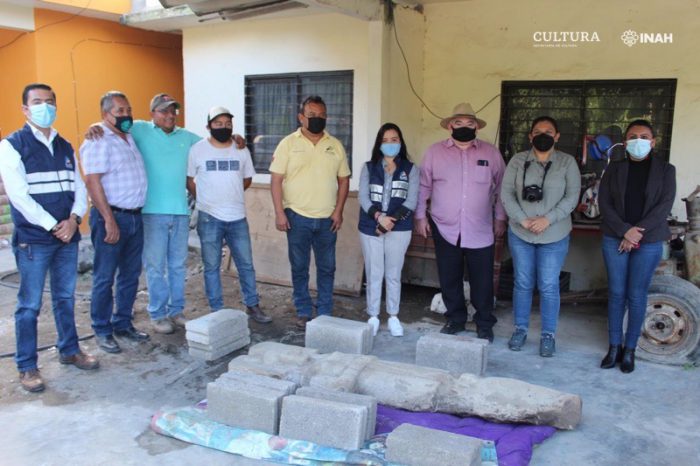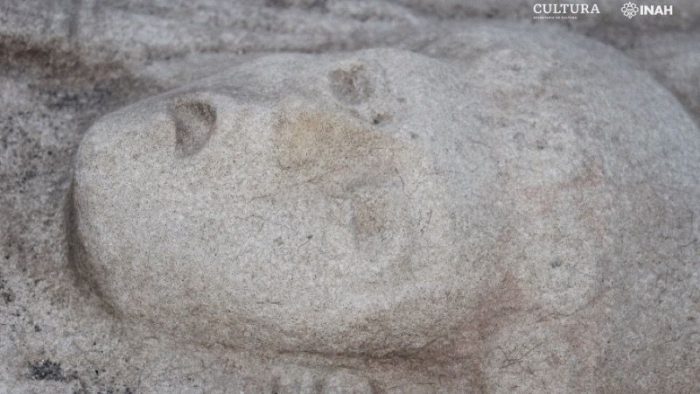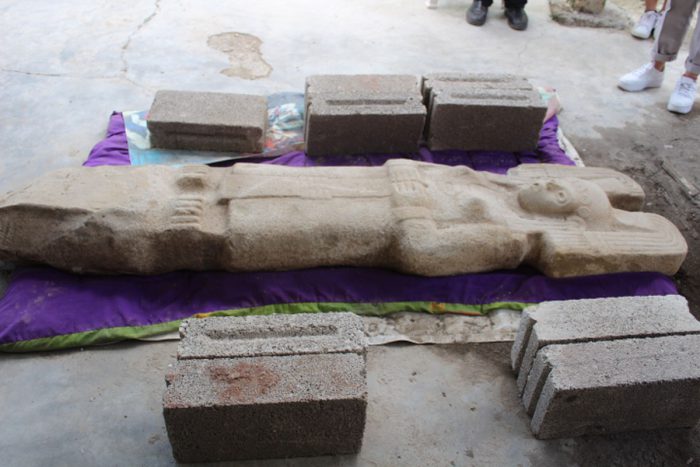Remember last Friday when we wrote about how an English woman found an ancient Roman artifact in her garden? And we said how you never really know what is lurking in your own neighbourhood? Well, it's happened again!
This time, it was an amazing New Year's Day discovery in Mexico. On January 1st, farmers found a large, mysterious statue that dates back hundreds of years, before Europeans came to this part of the world. It is a 500-year-old Huastec sculpture of a woman. Standing over 2 metres tall, the woman is dressed in an impressive headdress and likely represented a powerful woman in their society.
Who are the Huastecs?

Farmers and archeologists pose together with the sculpture. (María Eugenia Maldonado Vite/INAH)
The Huastec (say hoo-WAHS-tehk) are Indigenous peoples of Mexico who live mainly on the mideastern side of the country, which is where the statue was found.
The roots of the Huastec civilization could date back as far as 10th century BCE—that's around 3,000 years ago! They were conquered by the Aztecs around 1450 but were allowed to keep their own government and culture.
Between about 1519 and 1530, they were taken over by Spanish colonizers. Despite this, there are still thousands of people who speak the Huastec dialect and carry on the culture.
What is this sculpture?

Experts say the sculpture has features—such as the wide eyes that would've held precious stones—that come from other cultures. (María Eugenia Maldonado Vite/INAH)
The Huastec sculpture was found in a citrus field. It is carved into limestone, and measures about 2 metres (6.5 feet) tall, 60 cm (2 feet) wide, and 25 cm (10 inches) thick. Experts believe that the face would've likely had obsidian or other precious stones in its eyes.
According to archeologist María Eugenia Maldonado Vite of the National Institute of Anthropology and History, Veracruz Center, the statue represents more than just Huastec culture. "The style of the young woman from Amajac is similar to representations of Huastec goddesses of the Earth and fertility," she said in a statement, "but with an external influence, possibly [the indigenous group] Nahua, as can be seen in the inlaid eye socket—a feature that does not belong to Classical Huasteca sculpture."
In other words, the sculpture could be a window into how different cultures of the time influenced one another. It also reflects the high position that women had in societies—something that was quite different from the male-led European societies that arrived after the statue was made. Interesting history!
 The statue had a long 'peg' at its base, which means that it was made to be stuck in the ground. (María Eugenia Maldonado Vite/INAH)
The statue had a long 'peg' at its base, which means that it was made to be stuck in the ground. (María Eugenia Maldonado Vite/INAH)










cool
That is so cool! ??